Wood is valued worldwide as a building material because it is environmentally friendly and renewable. To achieve the strengths required in construction and to eliminate weak parts, wood is processed in specialized factories. Laminated beams (glulam) or CLT panels are factory-made solid wood materials that have been in use in our country for years. However, there are also those who point out that these materials are not 100% wood, as they contain glue. This is how DLT - Dowel-laminated Timber - or Dübelholzas it is known to German speakers. It is a material made from strips of lumber fastened with dowels. So the resulting panel is 100% wood, without glue, nails or other metal connectors.
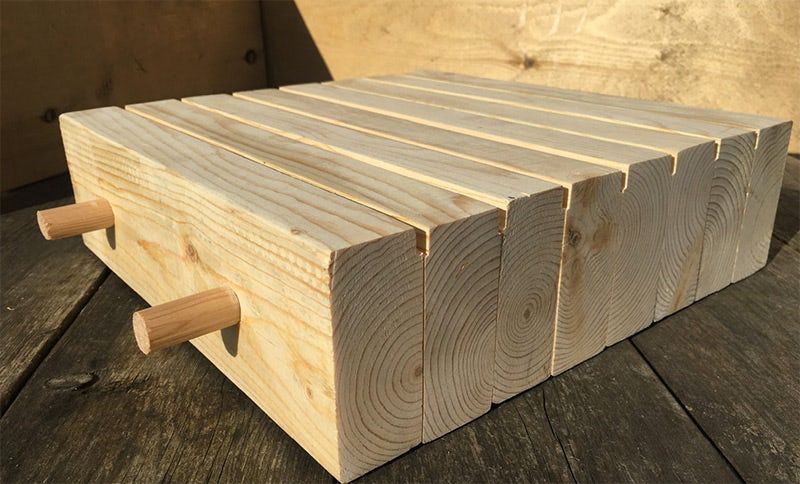
How and where the idea of a 100% laminated wood panel came about
The idea originated in Switzerland in the early 90s. To understand how the idea came about, let's go back long before the turn of the 20th century. That's when panels made of wooden slats nailed together began to be used for floors and ceilings. These proved to be very durable over time, with some still surviving in houses built in the early 20th century. Industrial development and the advent of cement and concrete led to the abandonment of this building material.
In the 1970s, when environmental protection was already an issue, Julius Natterer revitalized this concept based on the idea that wood is a renewable and non-polluting source. Panels of nailed wooden slats began to be industrially manufactured under the name NLT (Nail-laminated Timber) or Brettstapel in German (BS panels).
This brings us to the early 90s. In the meantime, CNC woodworking was gaining momentum, but in the case of NLT panels it could not be used because of the nails. They were replaced with glue and CLT was born. But for some who were keen to use wood in construction for ecological reasons, the presence of glue inside the panel meant chemistry and a departure from the natural concept. So came the idea of using dowels (cepi or tipli, as they are still called), as they used to assemble furniture. The two new construction materials, CLT and DLT, were enthusiastically welcomed by those who wanted to replace the old materials considered polluting and were developed in parallel.
Over time, the development of CLT has gained momentum, and it is now an impressive compound material. DLT has remained at the level of medium-sized factories, but it is still a material that is quite appreciated. The proof is the existence of more than 15 plants in Austria, Switzerland and Germany alone. It should also be noted that, unlike CLT where the timber boards are laid perpendicular, DLT boards are laid parallel, which makes them less structurally strong than CLT panels, but much more elastic.
How to get DLT panels
Although glue is sometimes also used to fix furniture elements with wood dowels, DLT panels are made of nothing but wood. The slats are made of resinous woodand the dowels are hard hardwood. The difference in moisture content between the two types of wood is what makes the wood firm. The transfer of moisture from the dowels to the drier blades causes them to expand and hold very well.
The production process has 4 main stages:
- removal of defects in the saw blades
- joining the blades in the teeth to reach the desired length
- blade profiling
- fixing with dowels
I do not insist on the process of eliminating defects, it has been discussed extensively in the articles on obtaining massive panels and joining in the teeth. Profiling the panel elements is an operation that gives DLT an advantage. Thanks to this operation, a wide variety of patterns can be obtained, making DLT panels very aesthetic. The resulting profiles can also be used to improve the acoustics of the rooms where they are used.
Dowel fastening has several stages:
- pressing the blades
- drilling
- introduction of dowels
- humidity balancing
The panel is not obtained at the desired width from the start. Groups of slats are obtained by nailing them together with dowels, which are then clamped together to form the final panel. The panels can be 20 m long, 4 m wide and 200-260 mm thick. For extra security, some manufacturers also use diagonal dowels.
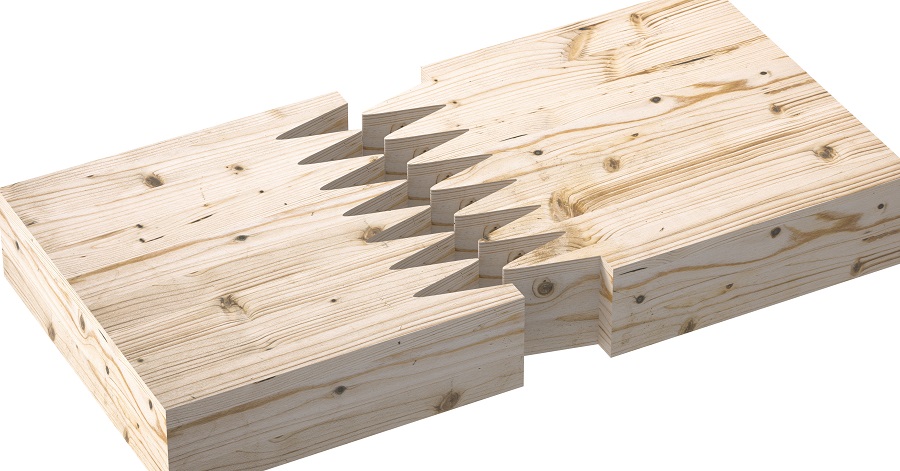
Where DLT panels are used. Advantages and disadvantages
DLT panels are used for the construction of floors, ceilings and interior walls of wooden buildings. They are manufactured in the factory to the required dimensions so that only the prefabricated elements are assembled on site. In addition to CNC machining, wood finishing may also be carried out in the factory.
The advantages of using such a material have been mentioned throughout the article. But I will summarize:
- material 100% solid wood, without glue, nails or other metal connectors,
- The lack of metal elements makes it easy to process by cutting or milling. Its processing can be done on automated production lines,
- very versatile material, the profiling of the elements results in a wide variety of designs. Sound insulating materials, electrical conductors or other such elements necessary for the construction can also be fitted into the profiles right from the production stage,
- It makes structures much lighter than using concrete or metal structures, which results in a smaller foundation and therefore lower costs,
- From the data found, production costs appear to be up to 20% lower than those for obtaining CLT.
The most important disadvantage of DLT panels is their sensitivity to humidity. In contrast to CLT, DLT panels are not totally stable and may have dimensional variations when humidity increases or decreases greatly. Another disadvantage is the lower structural strength compared to CLT panels.
Industrialized timber construction has led to the emergence of new materials to meet the strength requirements of ever larger and taller buildings. In future articles I will tell you a bit about MHM and WLT panels.





















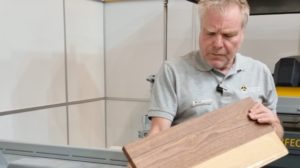
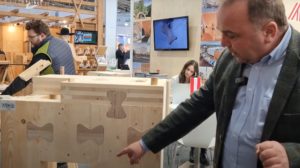
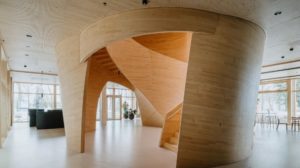









You say in the article that DLT does not contain adhesives.How is it then made to soak the blades from which it is made into teeth?